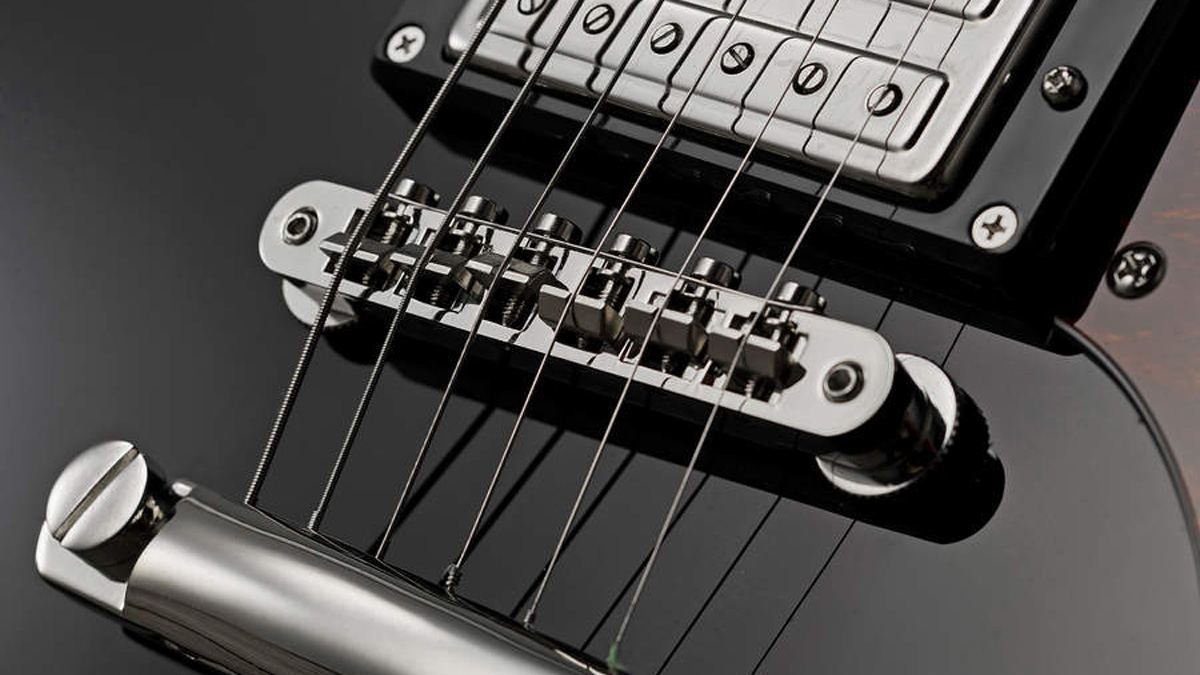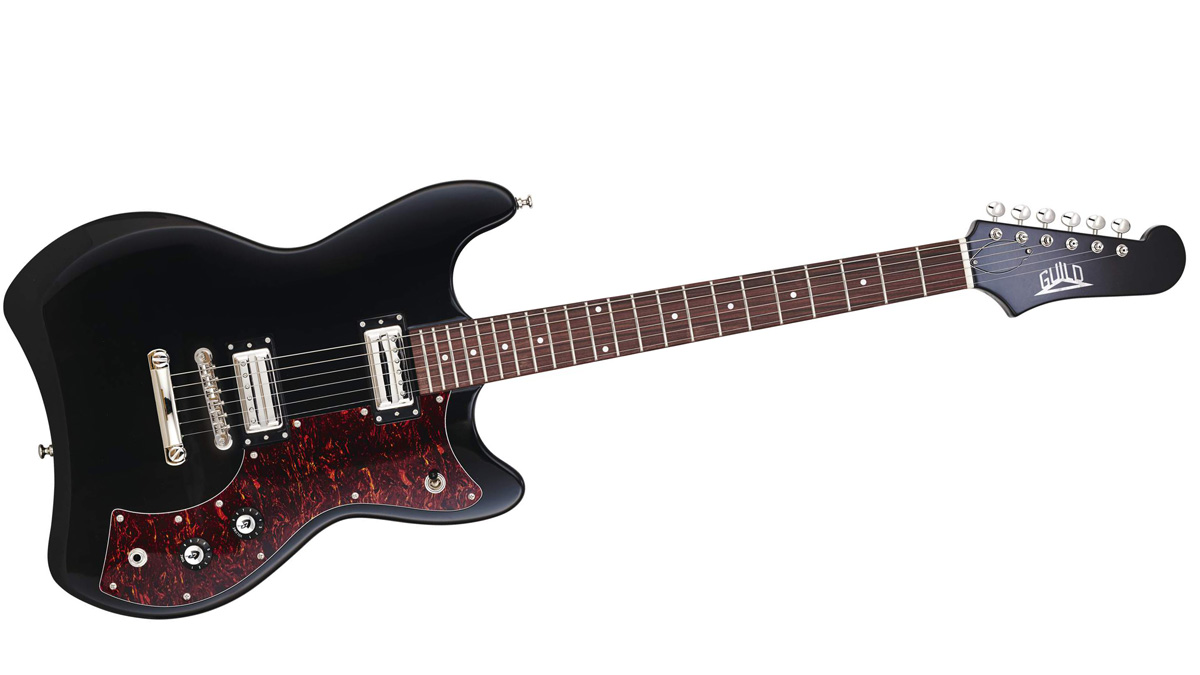MusicRadar Verdict
It’s not quite an impulse buy - but the very sensible price buys you a competent build and a distinctive retro vibe that’s matched by the sounds we hear.
Pros
- +
Original body and headstock style, great width of sounds, weight and playability.
Cons
- -
For the money, not a lot, plus there’s plenty of modding scope too.
MusicRadar's got your back
Guild was rather late to the electric solidbody market, taking until 1963 before it released a trio: the twin pickup S-200 Thunderbird and S-100 Polara and the single pickup S-50 Jetstar.
While all three models featured asymmetrical three-a-side headstocks they borrowed from previous designs: the S-200 had clear Jazzmaster/Jaguar style, the S-100 and S-50 a more conservative offset dual cutaway shape.
All three had a concave cutaway on their bases, while the S-200 and S-100 even included built-in flip-out stands on their backs. They lasted through the decade, before Guild took a more Gibson SG-like route with its 70s solidbody range.
The new Jetstar comes again in 60s style, although its S-50 designation has been lost and the days of it being a single pickup guitar have been consigned to history.

The guitar features an all-mahogany construction (hidden under the opaque finish), glued-in neck, pau ferro fingerboard and dual pickup. The Jetstar is Chinese-made and, unlike the 60s original, uses a longer Fender-style 648mm (25.5-inch) scale.
Taking its cue from the 60s S-50, the dual-cutaway body design retains a depth of 38mm, that curved base, as well as comfort contours on both the treble and bass-side rear waist . Meanwhile the back-angled, reverse six-in-a-line headstock, which appeared back in 1966, gives the model considerable style.
The Jetstar has two small humbucking Guild LB-1 pickups (which actually make it more like the original 60s-era S-100) although the scratchplate-mounted volume, tone controls and output jack are retained and augmented, obviously, by a three-way toggle pickup selector at the treble-side tip. Two colours are offered: Black and White with a tortoiseshell scratchplate and Seafoam Green with a white plastic scratchplate.
Sounds
Weight-wise the Jetstar is not overdone, which bearing in mind its quite broad body is not surprising. The bridge of the Jetstar sits down on the body and the neck exits at the 18th fret. Onto the neck, the Jetstar has string spacing of 35.5mm at the nut, 51.5mm at the bridge and profile-wise the Jetstar has a little shoulder rather than a classic C.
This guitars ’board is nicely done with a slightly rounded edge, the ends of the fret tangs on the Jetstar are cleanly filed.
We’ve discussed the ‘mismatch’ of the Guild LB-1 pickups and we’d suggest you give it a go: raise the bridge nice and close to the strings with a little bass-to-treble tilt and pull the neck down, especially on the bass side, and you’ll easily find a balance. Along with that comes a huge width of sound from the stinging big single coil-like voice at the bridge to the darker, textured neck and a sprightly and vibrant mix that has a lot of Fender in there - maybe the longer scale is adding its mojo?
The Jetstar bridge really spanks for instrumental leads yet it can do mellow jazz using the toggle
As a Newark St. Starfire user, this writer feels very at home here - there’s plenty of 60s jangle, that bridge really spanks for instrumental leads yet it can do mellow jazz at neck at the flick of that pickup toggle. The volume and tone work as you’d expect; you damp some highs with volume reduction and the tone takes a while to kick in but neither bothered us in the least.
Dropping into one of the most competitive market slots, the Jetstar has plenty going for it. It’s not quite an impulse buy - but the very sensible price buys you a competent build and a distinctive retro vibe that’s matched by the sounds we hear. Add a decent gigbag and it emerges as a fun guitar with plenty of serious application.
Dave Burrluck is one of the world’s most experienced guitar journalists, who started writing back in the '80s for International Musician and Recording World, co-founded The Guitar Magazine and has been the Gear Reviews Editor of Guitarist magazine for the past two decades. Along the way, Dave has been the sole author of The PRS Guitar Book and The Player's Guide to Guitar Maintenance as well as contributing to numerous other books on the electric guitar. Dave is an active gigging and recording musician and still finds time to make, repair and mod guitars, not least for Guitarist’s The Mod Squad.
Brace yourself: Bryan Adams didn’t buy his first real six-string in a five and dime
“Nobody listens to one genre. I literally don’t know anybody who listens to one genre. You can be a fan of so many different artists at once”: Laufey on what Gen Z can teach the rest of us about how to appreciate music
Bon Iver - ranked: from Sable, Fable to For Emma, Forever Ago











